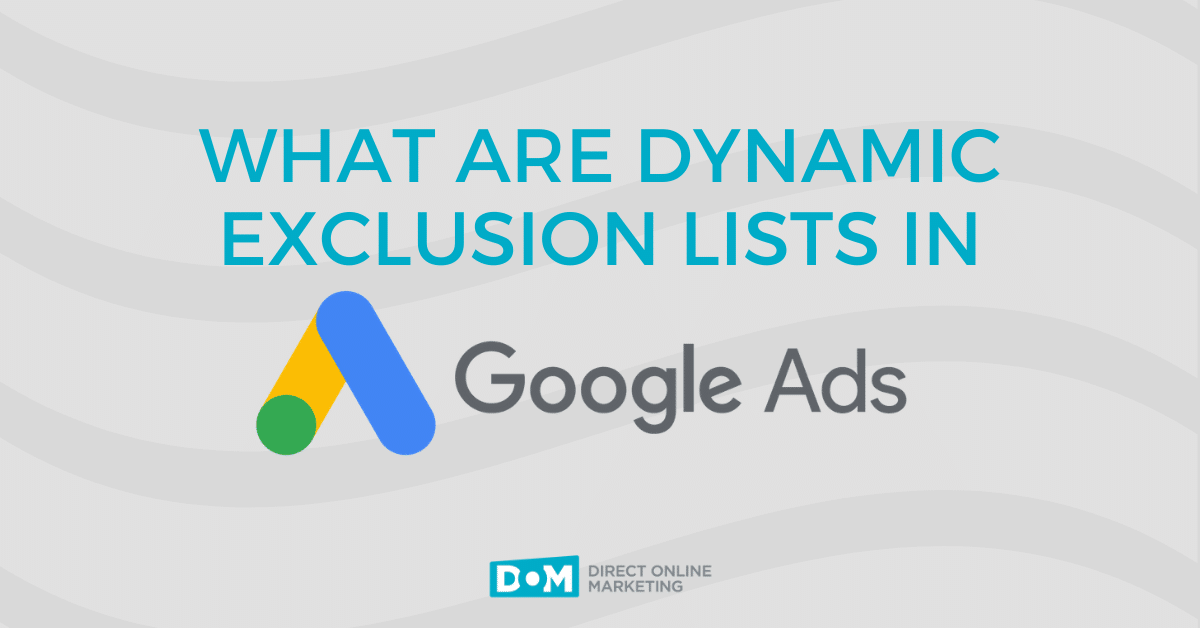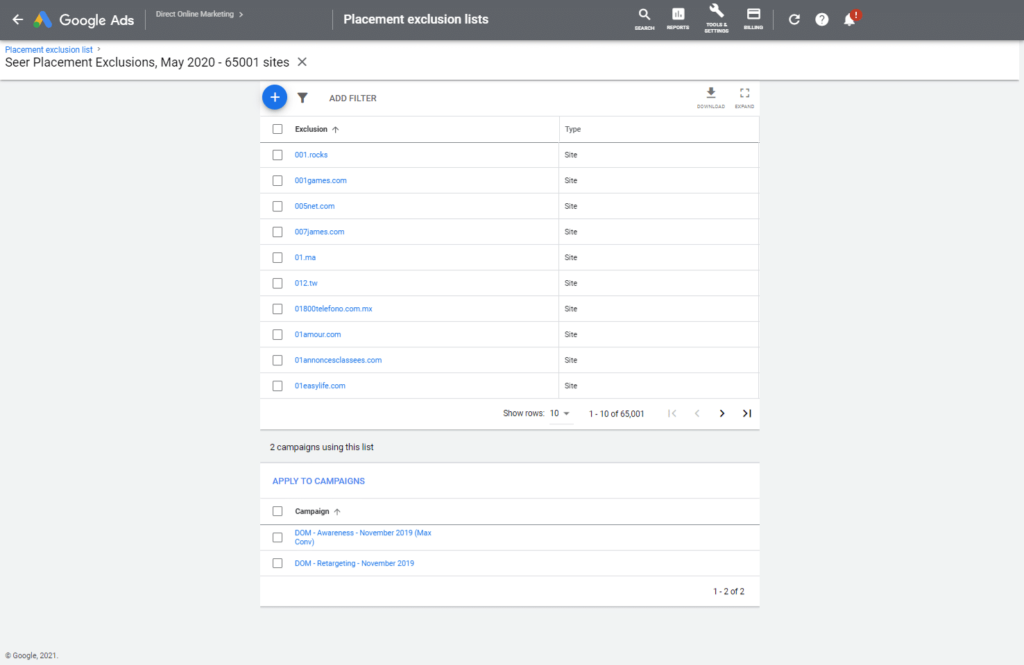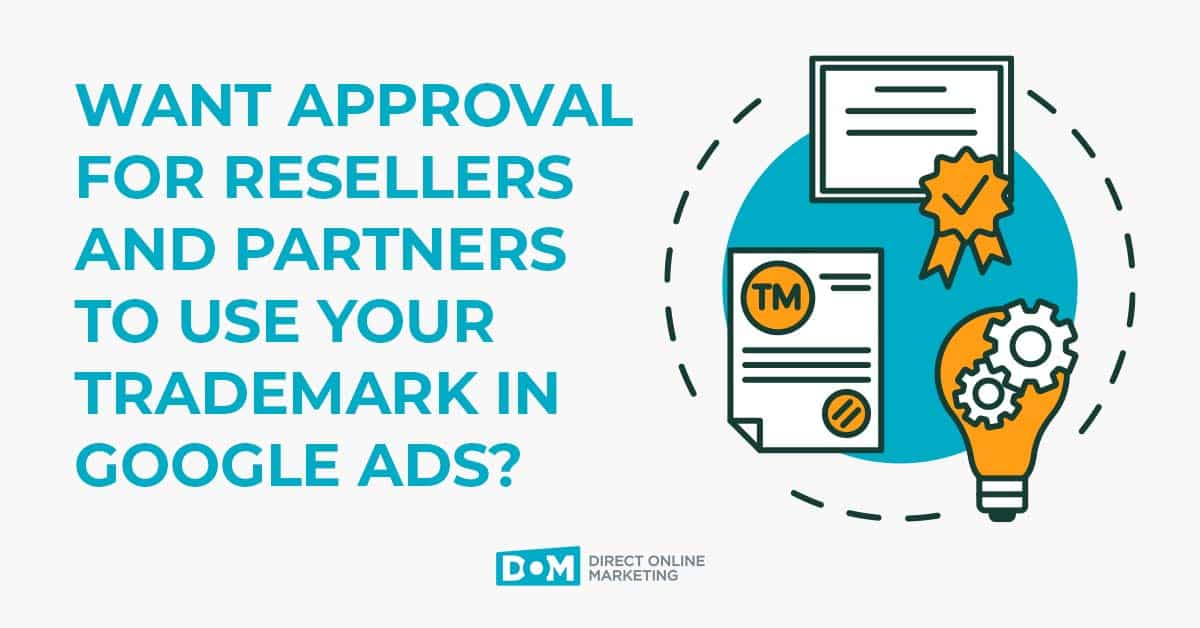
Placement exclusion lists are a tool we frequently use to focus the targeting of display campaigns. We’ve written before about how you can use exclusions to make sure your ads are seen by the right people (or, to be precise, not seen by the wrong people).
First, A Definition
You’re probably familiar with the idea of an “audience” and how you can show ads to specific populations. An exclusion list is like the opposite of that. It’s a way of telling the algorithms who you don’t want to see your ads. Implementing a list to exclude kids’ websites and adult-oriented sites is often low-hanging optimization fruit. When such sites are irrelevant to your buyer persona, there’s no sense spending any budget putting ads there.
Placement exclusions serve at least two purposes:
- Avoiding Industry Mismatch
You don’t need your product or service associated with every industry served by Google’s Display Network. You might not want your product ads to appear with marital aids and alcohol, not necessarily because you don’t like them but because what you sell (kayaks, tomatoes, cars, software, etc.) doesn’t really have anything to do with those things. - Filtering Out Users With No Purchase Intent
You don’t need to spend money on ads displayed to people who you know won’t be potential customers. While not completely impossible, it’s unlikely that a kid playing spelling games on a website directed at children is interested in your industrial manufacturing software.
Exclusion lists in action look like this:
Exclusion Lists, But Now Dynamic
Recently, Google announced the rollout of dynamic versions of those lists, further automating one of the more tedious tasks on an ad manager’s to-do list—updating the exclusion lists they already use as the landscape of the web changes. The heavy lifting of excluding certain websites or even entire domains is typically done as part of the regular—painstakingly manual—maintenance of an ad campaign. The ad manager notices that an ad is displaying on a new website, checks the website to see what kind of content it displays, deems it off-target, and then adds a new site to the list.
Dynamic exclusion lists allow ad managers to implement functionally identical exclusion lists that are created and kept up to date by somebody else. This is potentially a boon to smaller organizations that simply don’t have the time or resources to effectively manage their own exclusion lists.
Why Would I Want to Use Somebody Else’s Exclusion List?
As much as we like to think we’re all extremely trend-savvy and current on everything that’s happening everywhere on the internet, nobody really can be. The crowdsourced nature of a public exclusion list can be extremely useful—just look at the ubiquity of Wikipedia as an example of a self-correcting ecosystem of information.
Not only that, but advocacy organizations and industry associations have made it their business to be on top of the websites that, for example, promote political opinions you don’t want to associate with your brand. These trusted third parties can do the hard work of identifying those troubling websites; then you can easily and keep your ads away from them.
Ad Manager’s Takeaway
Dynamic exclusion lists save time. Implementing an exclusion list curated by a trusted industry partner replaces hours of manual review of where your ads have shown on the Display Network.
CMO’s Takeaway
Dynamic exclusion lists help brands maintain their identity. These lists head off unwanted appearances of your ads alongside inappropriate or irrelevant content.
For more information about how Direct Online Marketing can help you develop a great ad strategy, get in touch with us today.



